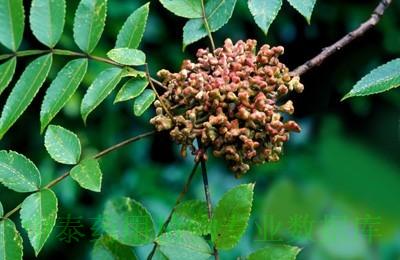| [English Name] | Chinese Nut-gall | |
| [Chinese Name] | 五倍子 | |
| [Pinying Name] | Wubeizi | |
| [Latin Name] | Galla Chinensis | |
| [Genera] | Eriosomatidae | |
| [Efficacy] | shouseyao | |
| [Pictures] | Plant picture | Drug picture |

|
|
|
| [Alias] | ||
| [Source] | ||
| [Plant morphology] | ||
| [Distribution] | ||
| [Gathering and processing] | ||
| [Characteristics] | ||
| [Ecology] | Chinese Nut-gall is formed by the insect gall growing up which Galla chinesis Aphid parasitic in leaves organization of anacardiaceae plants, The key of Chinese Nut-gall tree results and volume of yield,is Galla chinesis Aphid’s emergence.1、It grows in lime mountain bushes and open forest at the altitude between 350 to 2300 metres.2、It grows in the hillside open forest or bushes at the altitude between 900 to 2500 metres.3、It grows in lime mountain bushes and dense forest at the altitude between 460 to 3000 metres. | |
| [Chemical composition] | ||
| [Pharmacological activities] |
1. The water extract of Galla chinensis has antibacterial and antiviral action and can inhibit and kill microorganisms such as staphylococcus aureus, streptococcus, streptococcus pneumoniae, typhoid bacillus, shigella dysenteriae, bacillus anthracis, corynebacterium diphtheriae, pseudomonas aeruginosa and influenza virus PR8 and so on[1]. 2. Tannic acid from Chinese gall showed potent coagulating effect on spermatines and remarkable antibacterial effect, and which is expected to be an effective and safe vaginal spermicidal and antibacterial agent[2]. 3. The gallic acid isolated from Galla chinensis could inhibit proliferation of murine gastric cancer and hepatoma-22 cell lines both in vivo and in vitro[3]. 4. The petroleum ether extract of Galla chinensis has obvious hypoglycemic activity and the fatty oils are the effective constituents[4]. 5. The gallic acid and tannin isolated from Galla chinensis exhibit the anticaries potency on dental caries development and plaque microbiology in rats[5]. |
|
| [Clinical trial] | Infantile diarrhea:45 cases of patients applying Wubeizi(Chinese Nut-gall ) powder (Wubeizi, (Chinese Nut-gall ) Shengjiang(Fresh Ginger), Wuzhuyu(Evodia rutaecarpa), Baihujiao(white pepper), Congbai (Fistular Onion Stalk),etc ) on umbilicus. Results showed that 34 cases were cured;10 cases improved;1 cases were invalid [1]. |
|
| [Properties] | ||
| [Medical and other Uses] | ||
| [Dosage] | ||
| [Cautions] | ||
| [Traditional usage] | 1. Epistaxis2. Spontaneous perspiration and night sweat3. Chronic dysentery4. Prolapse of anus5. Turbid urine and nocturnal emission due to consumptive disease | |
| [Toxicological studies] | ||
| [Pharmaceutical preparations] | ||
| [References] |
Pharmacological actions: [1] ZHENG Lan-juan,LUO Yan-ping,WANG Yu-jiao, et al. Advances in the study of the antibacterial and anti-inflammatory action of Galla chinensis. Journal of Pathogen Biology, 2011,6(11):868-869. [2] PENG Jian-ping, ZHANG Jie, LUO Peng-cheng, et al. Spermicidal and Antibacterial Effects in Vitro of Tannic Acid from Chinese Gall. [3] WANG Liping, ZENG Xianxu, NIU Fenglan, et al. Inhibitive effects of gallic acid on proliferation of murine gastric cancer and hepatoma-22 cells. Journal of [4] PU Xu-feng, YANG Kui, HOU Shi-xian. Pharmacological screening of hypoglycemic fractions from Chinese gall. Chin Pharm J, 2005,40(19):1470-1473. [5] LI Ji-yao, ZHAO Peng-peng, XIAO Jin, et al. Effects of Galla chinesis on caries development in rats. Seventh national dental pulp epidemiology academic conference, 2007:121-122. [1] Infantile diarrhea treated with compound Wubeizi (Chinese Nut-gall ) powder in 45 cases.ShaXi journal of Chinese medicine,2008,29(3):330. |
|